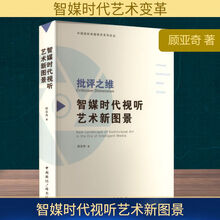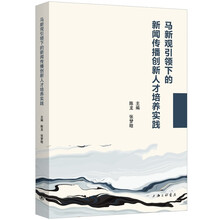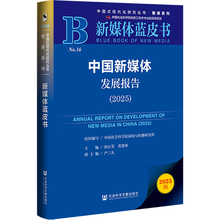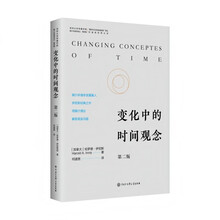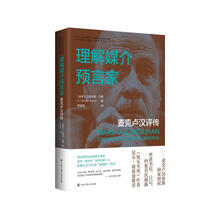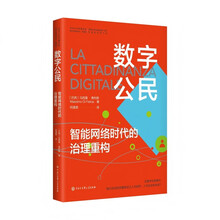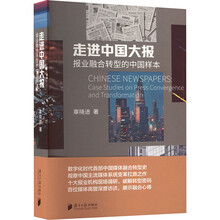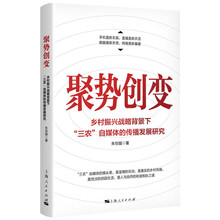Chapter 1 Introduction
1.1 Rationales for the Present Study
1.1.1 Critical Intersections: Media Discourse, Ideology and Culture
1.1.2 Perspective as the Socio-Cognitive Interface Between Ideology and Media Discourse
1.2 Objectives of the Present Study
1.3 Clarifications of Some Key Notions
1.3.1 Media and Discourse
1.3.2 Mediation and Power
1.3.3 Mediation and Ideology
1.4 Organization of the Book
Chapter 2 Literature Review
2.1 Introduction
2.2 A Critical Ovewiew of Media Discourse Studies
2.2.1 The Critical Turn in the Studies of Media Discourse
2.2.2 Approaches to Critical Media Analysis
2.3 Contrastive Discourse Analysis
2.3.1 Contrastive Rhetoric: An Overview
2.3.2 Contrastive Text Linguisties/Contrastive Discourse Analysis
2.3.3 Critical Contrastive Discourse Analysis
2.3.4 A Brief Summary
2.4 An Overview of Empirical Contrastive Critical Studies in Media Discourses
2.5 Summary
Chapter 3 Perspective and Perspectivation: Theoretical Con
3.1 Introduciton
3.2 Perpspective and Perspectivation: A Literature Review
3.2.1 Perspective in Functional Linguistics
3.2.2 Perspective in Cognitive Linguistics
3.2.3 Graumann's Concept of Perspeetivity and Its Applications in Discourse Analysis
3.2.4 Summary
3.3 Refinements of a Socio-Cognitive Concept of Perspectivity
3.3.1 Some Fundamental Thoughts in the Conceptualization of Perspectivity
3.3.2 Redefining Perspectivity
3.3.3 Modeling Perspectivity
3.3.4 Some Defining Features of Perspectivity
3.3.5 Clarify the Notion of Context for the Present Study
3.3.6 Perspective: An Etlnomethodological Approach
3.4 Perspective and (inter) Subjectivity in Discourses
3.4.1 Perspective and Subjectivity
3.4.2 Perspective and Intersubjectivity
3.5 Categories of Perspectivity
3.5.1 An Overview of the Categorization of"Point of View" in Stylistics
3.5.2 Three Layers of Perspectivation in Discourse
3.6 Summary
Chapter 4 Perspectivation as a Socio-Cognitive Approach to Cross-Cultural Media Discourse Analysis
4.1 Introduction
4.2 News as the Construction of Social Reality
4.2.1 "Objectivity" in Media Discourses
4.2.2 News Within a Cultural Circuit
4.3 Perspectivation and Critical Media Discourse Analysis
4.3.1 Critical Discourse Analysis: Pros and Cons
4.3.2 Social Cognition and CDA
4.3.3 Perspectivation as a Socio-Cognitive Interface Between Discourse and Society
4.4 Framing vs. Perspectivising in Media Studies
4.4.1 Framing Analysis in Media Studies
4.4.2 Perspectivizing as a Holistic Approach to Media Discourses
4.5 Perspectivation in News Text Production
4.5.1 Perspectival Choices in the Process of News Text Production
4.5.2 Social and Cultural Influences on Perspectival Choices in News Text Production
4.6 Summary
Chapter 5 Research Design
5.1 Introduction
5.2 Research Assumptions
5.3 Research Questions
5.4 Data Collection and Corpus Design
5.4.1 Why Media Coverage on Disaster
5.4.2 Why the New York Times and the People's Daily?
5.4.3 Data Collection
5.5 An Analytic Framework
5.5.1 Philosophical Thoughts Underpinning the Analytic Framework
5.5.2 Levels of Analysis
5.6 Summary
Chapter 6 Monologieal Perspeetivation
6.1 Introduction
6.2 Space and Time
6.2. I Spatial-Temporal Perspect
6.2.2 Data Analy
6.3 Social Actors and Social Actions
6.3.1 Perspective and Agency
6.3.2 Analytic Tools
6.3.3 Data Analysis
6.4 Evaluation
6.4.1 Perspective and Evaluation
6.4.2 Appraisal Theory
6.4.3 Data Analysis
6.5 Summary
Chapter 7 Dialogical Perspectivation
7.1 Introduction
7.2 Theoretical Overview
7.2.1 Dialogism
7.2.2 Intertextuality
7.2.3 Types of Intertextuality
7.2.4 Intertextuality and Hegemony
7.2.5 Intertextuality in Media Discourses
7.3 Perspective and Intertextuality
7.3.1 Sanders and Redeker's Study
7.3.2 Thompson's Approach to Intertextuality
7.3.3 White's Approach to Intertextuality
7.3.4 An Integrated Approach to Perspective and Intertextuality
7.4 Data Analysis
7.4.1 Reported Discourse
7.4.2 Source Attribution
7.4.3 Endorsement
7.5 Summary
Chapter 8 Metalogical Perspectivation
8.1 Introduction
8.2 Metalogical Perspectivation: Theoretical Concerns
8.2.1 Metalogical Perspective, Macrostructure and Global Coherence
8.2.2 Macrostructure, Topic Control and Agenda Setting
8.2.3 Topics, Themes and Headline Analysis
8.3 Data Analysis
8.3.1 Topic Control and Thematic Representation in AMC
8.3.2 Topic Control and Thematic Representation in CMC
8.4 Summary
Chapter 9 Conclusion
9.1 Introduction
9.2 Major Findings of the Study
9.2.1 Validity of Perspectivation as a Holistic Approach of Investigating Cross-Cultural Media Representation
9.2.2 The Interconnectedness of Three Layers of Perspectivation
9.2.3 The Relevance of Socio-Cultural/Political/Institutional Specific Repertoire for Communicative Practice
9.3 Theoretical Contributions of the Study
9.3.1 A Socio-Cognitive Substantiation of the Concept "Perspectivity"
9.3.2 Enrichment of the CDA Studies
9.3.3 Extension of Contrastive Discourse Analysis
9.4 Pedagogical Contributions of the Study
9.4.1 Pedagogical Contributions in the Study of Intercultural Communicative Practices
9.4.2 Critical Media Literacy
9.5 Limitations and Future Directions of the Study
Bibliography
Acknowledgements
展开

